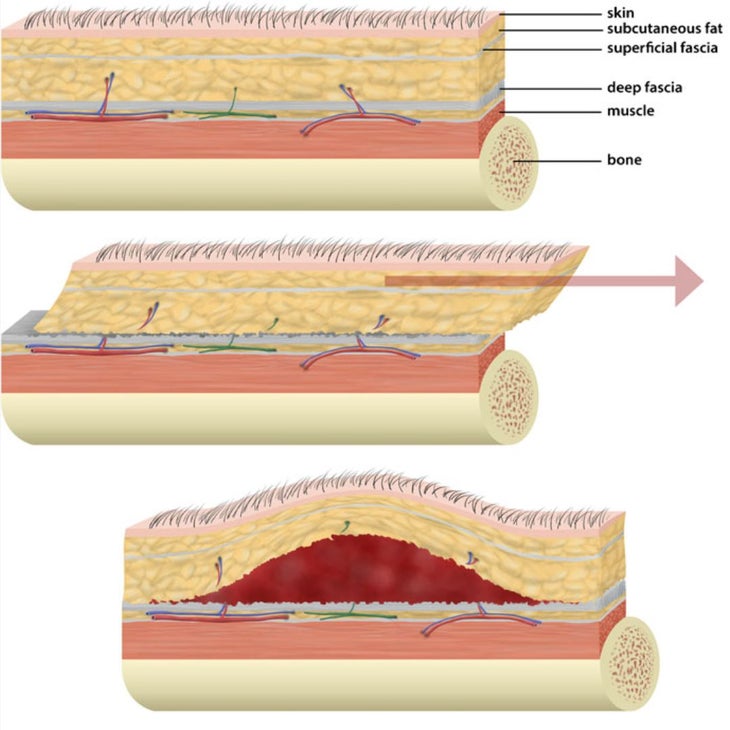New perk! Get after it with local recommendations just for you. Discover nearby events, routes out your door, and hidden gems when you sign up for the Local Running Drop.
When Jan Frodeno announced last Friday that he won’t be in Kona this year due to an unusual post-bike crash complication called a Morel-Lavallée lesion, there were a couple of common responses.
Of course, there was the collective, “Oh, NO” – for obvious reasons. Nobody wants to see a top athlete taken down by an injury so close to the World Championship, and we’re all hoping Frodeno’s surgeries and recovery go smoothly.
That said, if your reaction was more along the lines of, “What the heck is a Morel-Lavallée lesion?” you’re not alone. In fact, we were right there with you, which is why we went to Brennan Boettcher, D.O., a physiatrist and sports medicine physician at Mayo Clinic, to learn more about the rare condition.
What is a Morel-Lavallée lesion?
“The easiest way to think of a Morel- Lavallée lesion, or MLL, is that it is similar to a blister, which is visible and forms between layers of skin that have been sheared or sustained friction,” Boettcher says. “However, the MLL is deeper, and is typically the result of injury to lymphatic and blood vessels between the fascia and skin, instead of between skin layers like a blister is.”
When this happens, a collection of fluid forms and spreads along the fascia, but because the connections between the fascia and the skin are also injured, all that fluid gets in and separates those structures, preventing them from scarring back together, he explains – and that makes healing a challenge. “If not treated, this fluid can form a capsule around it, reducing the ability of the body to form the appropriate scar tissue, and making it difficult for the fluid to go away.

Now, if this is all brand new information to you, that’s for good reason – MLLs are quite uncommon, and possibly under-recognized, especially when small. “Over a period of eight years, Mayo Clinic identified only 80 patients who developed these injuries as a result of trauma,” Boettcher says, adding that an Australian Level 1 trauma center only identified 63 patients with MLLs over a 10-year period.
Because a MLL is most likely to form related to high velocity trauma, something like a fall from the bike, followed by a slide across the ground, is the most likely cause for triathletes. “The shearing force between the skin and the fascia while sliding creates the injury to the connective tissue, lymphatic, and blood vessels, allowing the blood and lymphatic fluid to accumulate,” Boettcher says. It’s also possible for a MLL to form following direct trauma (like falling and landing hard on a hip) or with repetitive microtrauma (like you might see in long distance running), but, he says, this is all much less common than a fall with a shearing force.
How do you know if your injury is a Morel-Lavallée lesion?
Alright, now that we know what a MLL is and how one could be caused, we’re pretty sure we know what your next question will be. How do you know if you’ve got one?
“MLLs can be difficult to diagnose when small,” Boettcher says. “They may seem like a ‘bruise’ in these scenarios, with tenderness, skin discoloration, and swelling.” You’re most likely to see them on bony prominences, he says, like your trochanter (where muscles are attached to the upper part of your thigh bone on the side of your hip). With larger MLLs (which are easier to identify), patients frequently notice limited range of motion in that area. “The characteristic findings of a MLL include increased mobility of the skin, and a ‘fluid wave,’” he says. “This fluid wave occurs when pressing on one side of the collection, the fluid forms a “wave” on the other side.
Morel-Lavallée lesion: Treatment and recovery
Once a doctor has determined that an injury is, in fact, a MLL, the treatment varies by size. “Large fluid collections (> 50 mL) are more likely to require surgical intervention to resolve,” Boettcher says. “This can delay recovery, but typically results in resolution of the problem.” If you’ve got a smaller lesion, you may be able to resolve the issue with compression and by restricting your activities, or, in some cases, by having the fluid removed with a needle, he says.
The recovery timeline is also quite variable, Boettcher says, ranging from a quick four weeks to as long as 10 months, with the most common complications being infection and issues with the skin in the area healing.
So, what’s the takeaway here? First of all, that bruise on your hip is almost definitely not a MLL. Remember, they’re really rare! However, if you’ve experienced an injury like Boettcher describes above and have a bruise or wound that isn’t healing as you’d expect, hey – you’re a triathlete. You know your body, you know what’s normal, and you should never hesitate to be your own advocate when it comes to health, so don’t be afraid to check in with the doc.
RELATED: An Injury Guide For Triathletes